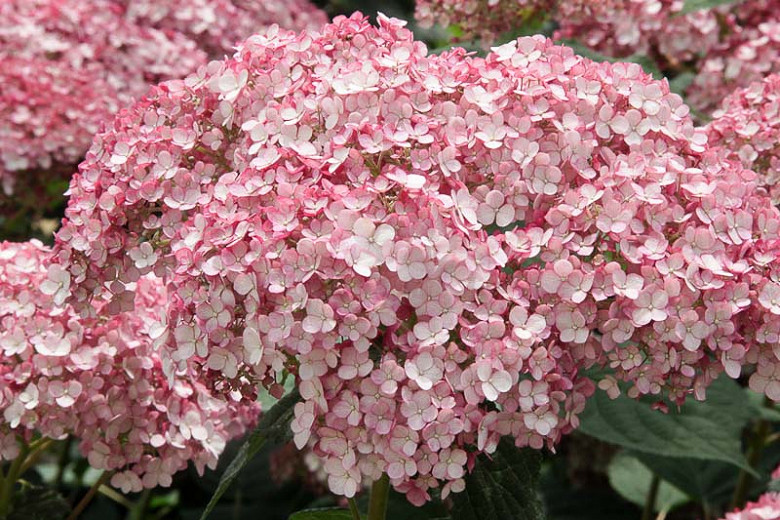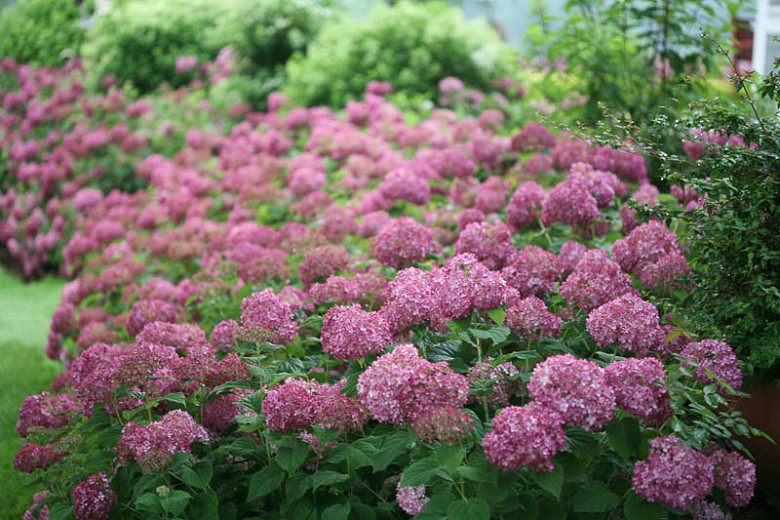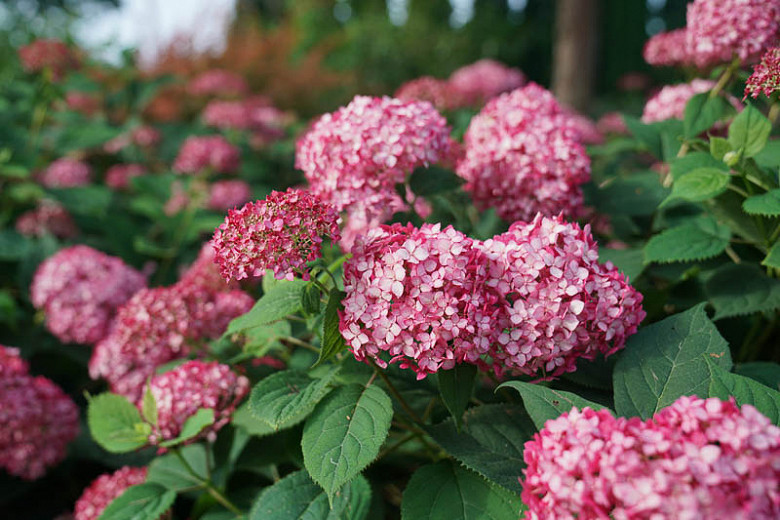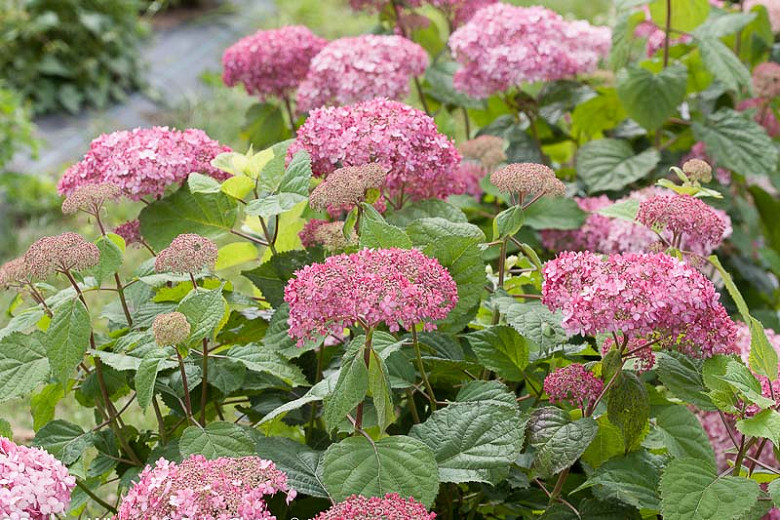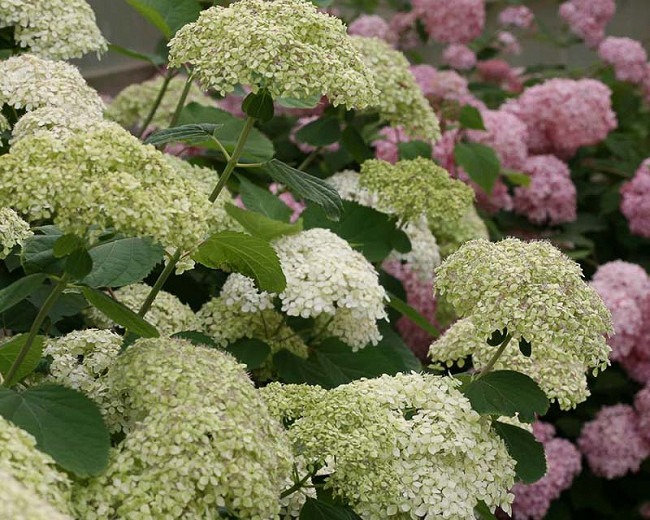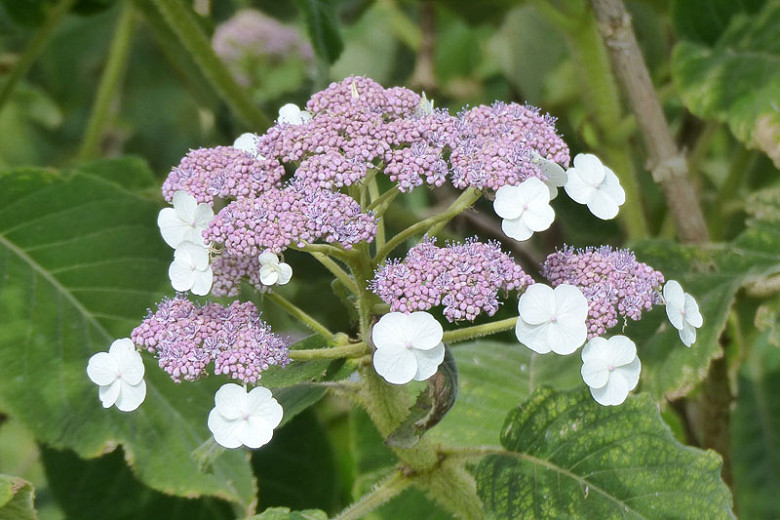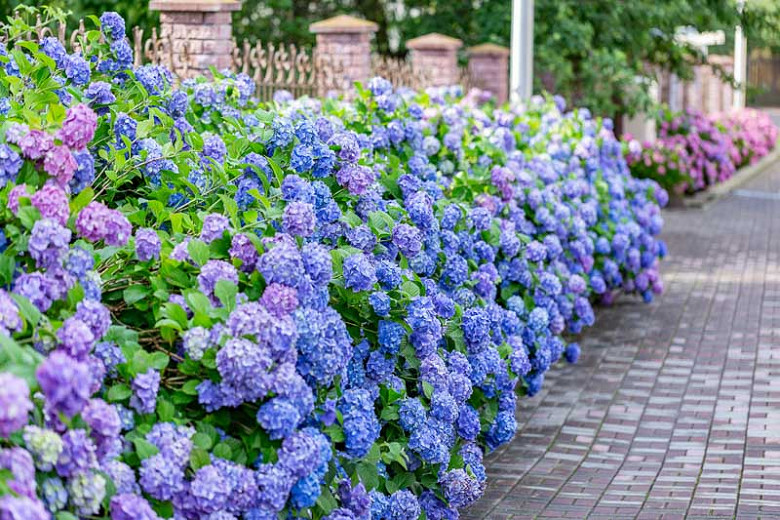Hydrangea anomala subsp. petiolaris (Climbing Hydrangea)
Native to Asia, Hydrangea anomala subsp. petiolaris (Climbing Hydrangea) is a vigorous, large, deciduous climber that clings by aerial rootlets along the stems. Masses of fragrant white flowers held in flattened clusters, up to 8 in. across (20 cm), appear in late spring to early summer. Resembling lacecap flowers, each cluster consists of tiny, creamy-white to greenish-yellow fertile flowers in the center surrounded by a ring of showy white sterile flowers. Unfurling in spring, the foliage of heart-shaped, shiny, rich dark green leaves, up to 4 in. long (10 cm), keeps its fresh look throughout the summer and turns golden-yellow in the fall. Exposed in winter, the trunk is equally attractive with its reddish-brown exfoliating bark on mature stems, adding a much-needed splash of color to the winter landscape. An extremely versatile vine with year-round interest that looks terrific climbing up a wall as it clothes it with its pretty foliage and delicate lacecap flowers. A very popular and elegant landscape plant.
- Winner of the prestigious Award of Garden Merit of the Royal Horticultural Society for its noteworthy qualities.
- Grows up to 30-40 ft. tall (9-12 m) and 5-6 ft. wide (150-180 cm). Slow to establish, but quite vigorous thereafter. If unsupported, this vine can form a sprawling shrub, up to 3-4 ft. tall (90-120 cm)
- A part shade to full shade lover, it is best grown in rich, moist, well-drained soils. Full sun is tolerated if constant moisture is provided. Intolerant of hot and humid conditions.
- ideal to cover unsightly walls, and fences. Effective climber against walls. Looks fantastic climbing up arbors, fences, or the trunks of large trees.
- Excellent resistance to diseases. Watch for aphids, capsid bug, glasshouse red spider mite, and hydrangea scale
- Propagate by layering
- No regular pruning is needed. However, trimming may be required to keep this plant to the space available. Prune after flowering.
- Native to Japan and South Korea.
- May cause mild stomach upset if ingested, and contact with foliage may aggravate skin allergies. Wear gloves and other protective equipment when handling
- Toxic to dogs, toxic to cats, toxic to horses.
Requirements
| Hardiness | 4 – 9 |
|---|---|
| Heat Zones | 1 – 9 |
| Climate Zones | 2, 2A, 2B, 3, 3A, 3B, 4, 5, 6, 7, 8, 9, 10, 11, 12, 13, 14, 15, 16, 17, 18, 19, 20, 21, A2, A3 |
| Plant Type | Climbers |
| Plant Family | Hydrangea |
| Exposure | Full Sun, Partial Sun, Shade |
| Season of Interest | Spring (Late)Summer (Early,Mid,Late)Fall |
| Height | 30' – 40' (9m – 12m) |
| Spread | 5' – 6' (150cm – 180cm) |
| Spacing | 72″ (180cm) |
| Water Needs | Average |
| Maintenance | Low |
| Soil Type | Clay, Loam, Sand |
| Soil pH | Acid, Neutral |
| Soil Drainage | Moist but Well-Drained |
| Characteristics | Fragrant, Plant of Merit, Showy |
| Garden Uses | Wall-Side Borders |
| Garden Styles | City and Courtyard, Informal and Cottage |

